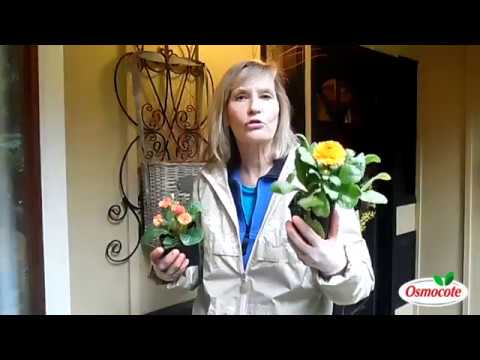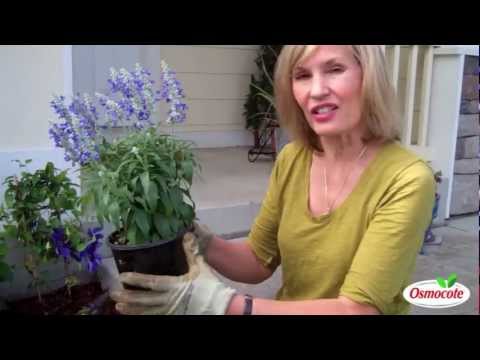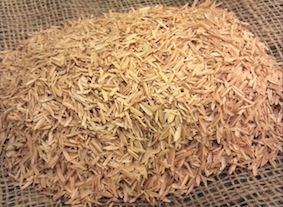If you are new to container gardening, or you’d just like to brush-up on your gardening savvy, here are a few potting mix basics you may wish to consider.
In case you are wondering why I’m focusing on container gardening right now, it’s because I could use some flower power to regain my sanity after a very long winter. Hooray! It’s finally starting to warm up! I am eager to fill my pots and window boxes with fragrant pansies, Persian buttercups, sweet alyssum and other cool-season annuals.
Each year I plant about 40 containers, window boxes and hanging baskets. Although I buy plants and sow seeds, I don’t replace the potting mix from the previous year. That would be a very expensive endeavor. Instead, I simply add more potting mix and granular fertilizer.
Importantly, I never use garden soil or “top” soil in containers. Garden soil is far too ‘heavy’ (dense) for pots and window boxes, and it easily becomes waterlogged. When that happens, leaves turn yellow, the roots can’t get air or nutrients, plant growth slows, and the roots may rot. Instead, I use soil-less potting mixes, which are sold in bags at garden centers and chain stores. These loose, porous, lightweight mixtures not only make a container less heavy and easier to move, but they help get water, fertilizer and air down to the plant’s root system.
Selecting a Potting Mix
Soil-less mixes are made from a variety of organic and inorganic materials. The main ingredients likely include peat moss, composted pine bark, coir, vermiculite and perlite. These materials help hold water but also allow quick drainage. A plant’s roots seek out pockets around the coarse fibers where they can access nutrients and air.
Potting Mix Organic Materials
A typical soil-less mix may contain about 40 percent sphagnum peat moss, 20 percent pine bark, 40 percent vermiculite, perlite and fertilizer. Peat moss is part of the formula because it can hold many times its weight in water. That’s important when we have hot, dry weather in July and August. At that time of year, all of my containers get watered once a day. Composted bark from pines, and other trees, is one of the most widely used materials in soil-less mixes. While bark doesn’t retain moisture like peat moss, it’s spongy and permeable.
Coir is another organic potting mix material. It’s made from coconut hulls. Like peat moss, it has great water-holding capacity. Some mixes may feature only coir or a mix of coir and composted bark. Other potting mixes may include sphagnum peat moss, peat humus, shrimp shells, composted manure, seaweed powder, limestone, coarse sand, leaf mold or spent rice hulls. Some products contain granular fertilizers and / or mycorrhiza (my·cor·rhi·zee), a fungus that grows in or on a plant’s roots and helps the plant take in nutrients.
Potting Mix Inorganic Materials
Vermiculite and perlite are inorganic lightweight materials that help retain moisture and create a porous mix. Both of these ingredients improve the soil’s physical qualities. Vermiculite is a mineral that expands when heated. It is spongy and holds air, nutrients and water. Perlite is a volcanic glass that expands when heated at extremely high temperatures. It promotes good drainage while holding nearly as much water as vermiculite. Perlite and vermiculite are also sold separately in bags as soil amendments. If you have heavy clay garden soil in your beds, both products can help lighten and aerate the soil.
Some potting media includes plastic beads (polystyrene) and calcined clay (the type that’s found in cat litter products). The beads promote drainage and the clay particles improve the ability to hold moisture and nutrients in the soil.
Potting Mix Fertilizer
Soil-less potting mixes have little natural fertility so the manufacturer may include some slow-release fertilizer to get plants started. The fertilizer information can be found on the package. The slow-release granular fertilizers may feed the plants for up to three months. If the product does not have fertilizer, add it to the mix before planting. Material from Osmocote® Plant Food, this website’s sponsor, is included in some of the potting mix brands. If not and you want to add plant food to the potting mix, it is a safe and effective choice – even for edible plants.
When reusing potting mix, I always add some granular slow-release fertilizer before planting my pots. That’s because the plants that grew in the mix the previous year consumer most of the nutrition. Always follow label instructions so you don’t over-fertilize, which may burn the plant roots. It’s like vitamins — taking too much is not a good thing.
Potting Mix Water Retention
Some potting mixes contain crystal polymers to help retain moisture. They may be liquid surfactants or gel-forming granules. A potting mix with these ingredients can be helpful in keeping the mix moist in hot weather or when the containers are placed in sunny locations. If the potting mix contains extra “wetting” agents, that information is typically included on the label.







